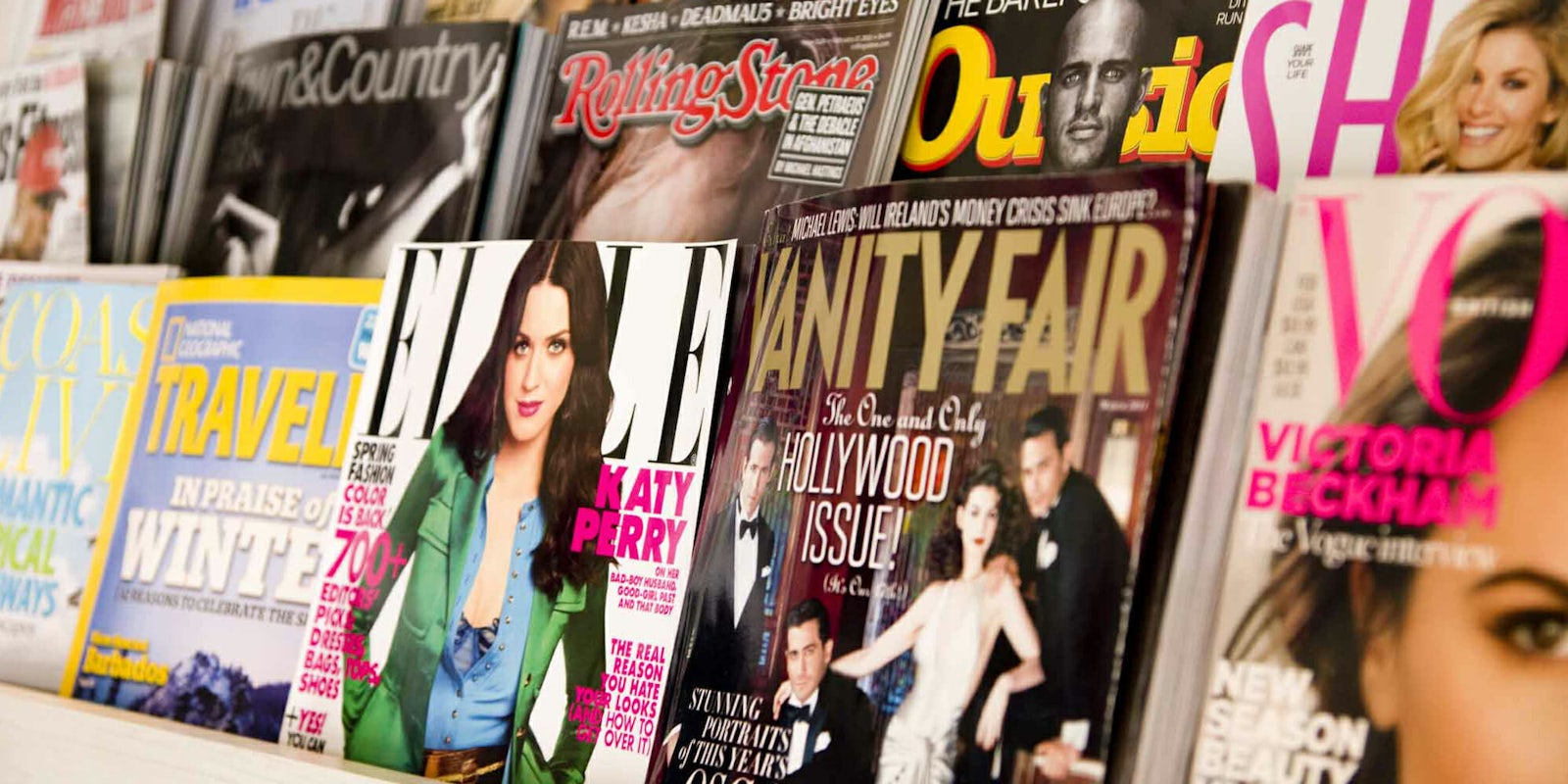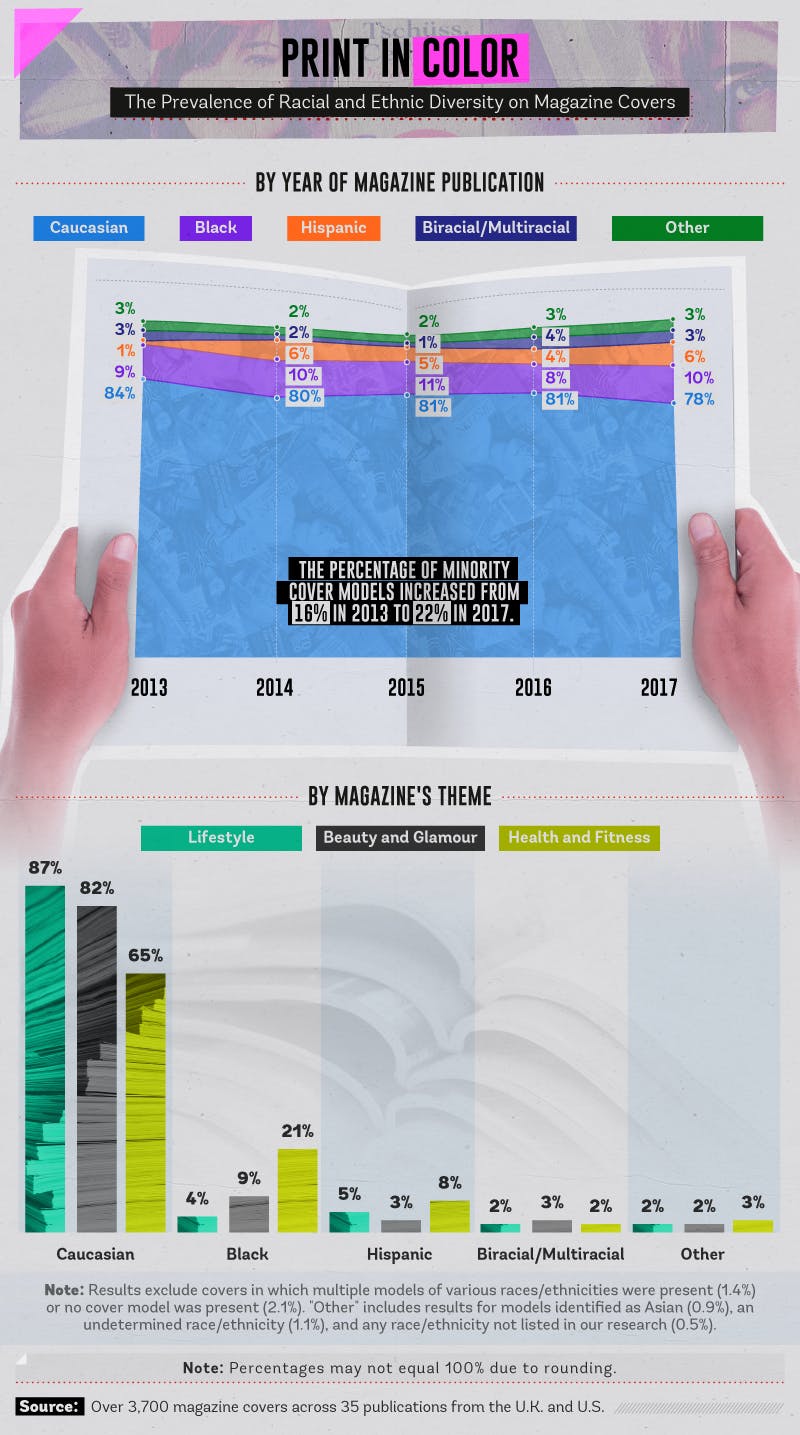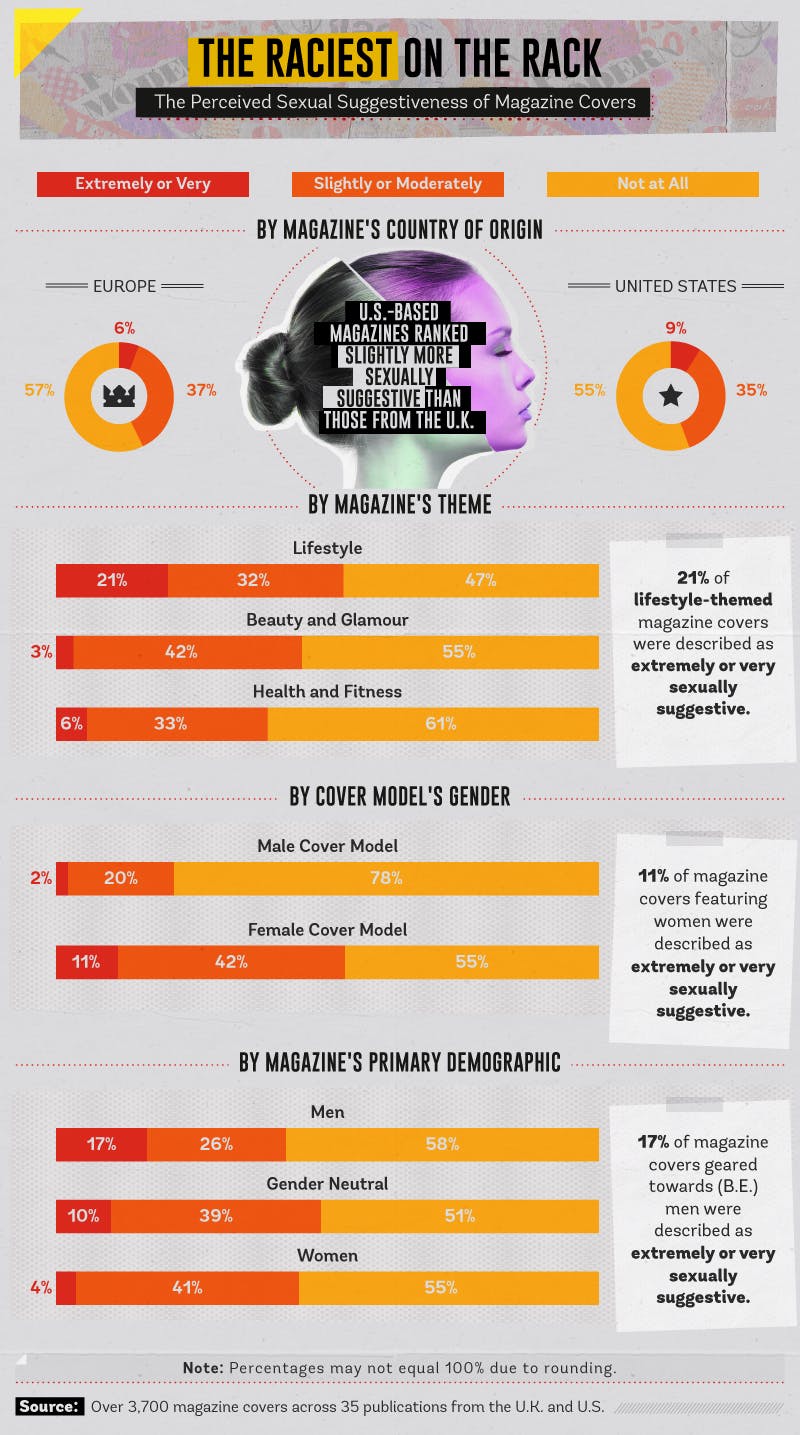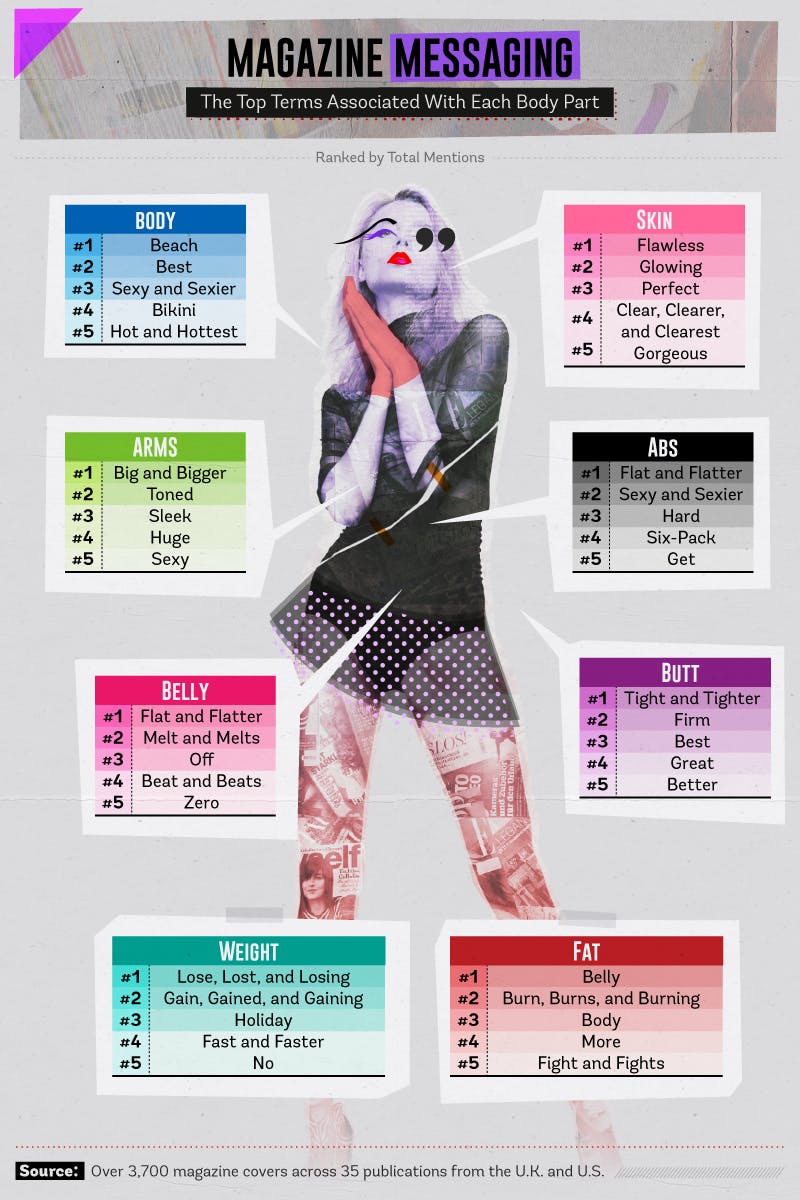Even if Americans spend much of our reading time online, we are still exposed to magazine covers every day, with everything from Cosmopolitan to Time prominently displayed in grocery store lines and bookstores across the nation. And if you’ve ever glanced over these covers, it should come as no surprise that these images are championing certain bodies over others.
A new study from U.K. health services site DrEd.com, called “Magazines and Body Image,” breaks down over 3,700 magazine covers published by 35 different publications across the U.S. and U.K. in 2017, from bro-centric Maxim to woke Teen Vogue. And first and foremost what it found was that print media has some serious issues with representing Black people.
Only 10 percent of publications across the lifestyle, fitness, and beauty industries featured Black models on the cover. In particular, 4 percent of lifestyle magazines had Black people present on a cover in 2017, while only 9 percent of beauty and glamour publications’ covers had a Black model. In comparison, 87 percent of all lifestyle magazine covers featured a white model at some point last year, and 82 percent of beauty and glamour magazines featured one.
Black models missing from magazine covers is bad enough. But the study found that when models of color do appear on magazine covers, they generally undergo whitewashing to appeal to a “broader” demographic that values whiteness.
In one instance, actress Lupita Nyong’o had her hair, in its natural texture, edited without permission for the U.K. magazine Grazia. There are also similar situations where models of color are given lighter skin, signaling that white bodies have more “appeal” while stigmatizing Black and Brown bodies.
“As others have identified, these inconsistencies create a body image stigma that women with a certain skin color or hair type relating to ethnicity may be perceived as less beautiful than their Caucasian counterparts,” the study notes. “In similar examples, adverts have used editing software to lighten the skin of darker models to make them appear more fair, reiterating a problematic standard that a lighter skin tone is more cosmetically appealing than dark skin.”
Also not a surprise, women are more likely than men to be sexualized on magazine covers. In a separate poll by Dr.Ed, 11 percent of all covers featuring a female model were seen as “extremely or very sexually suggestive” and 42 percent were rated “slightly or moderately” suggestive by the 230 people surveyed. In comparison, 78 percent of all magazine covers featuring a male model were not seen as sexual in the slightest. But when a woman features on a publication’s cover, magazines are five times as likely to be seen as suggestive throughout genres.
That said, there are several positive trends emerging from magazine covers. According to the report, representation for people of color on covers in general has increased between 2013 to 2017, with 22 percent of all magazines covers studied featuring models of color in 2017. In 2013, that number rested at 16 percent.
Also, while lifestyle and beauty magazines still struggle with representation for people of color, health and fitness publications are making major strides forward. Black models were featured on 21 percent of health and fitness publication covers in 2017, while Latinx models did on 8 percent of the fitness industry’s covers. Representation for Latinx communities has been rising in general since 2013, which may mean there’s some attention being paid to the importance of representing various cultures across publication genres.
The study argues that print media has a “profound impact on the men and women who view them,” so hopefully, publications will use 2018 as an opportunity to tackle some of its problems.
Read through DrEd.com’s full study here.





